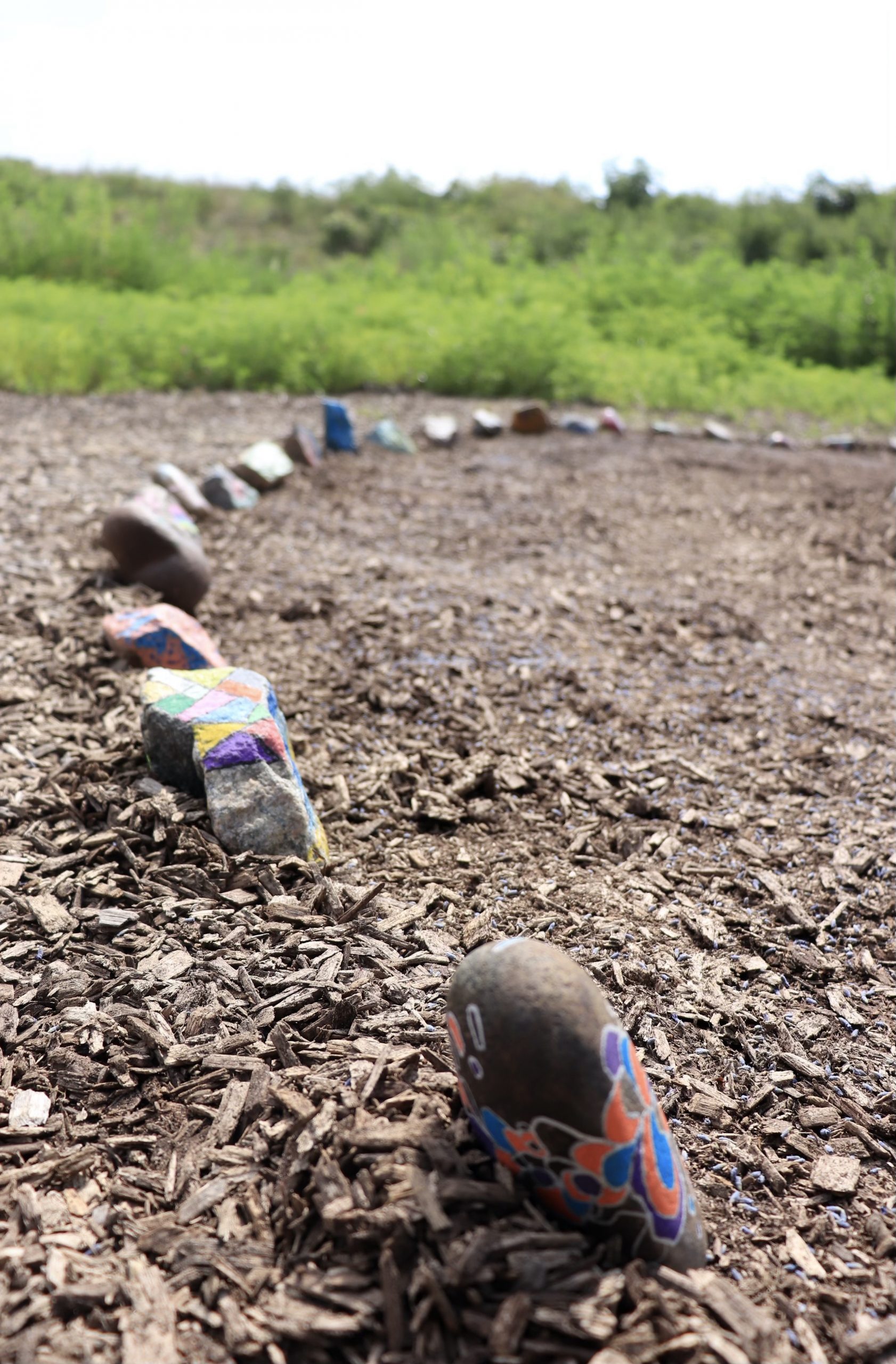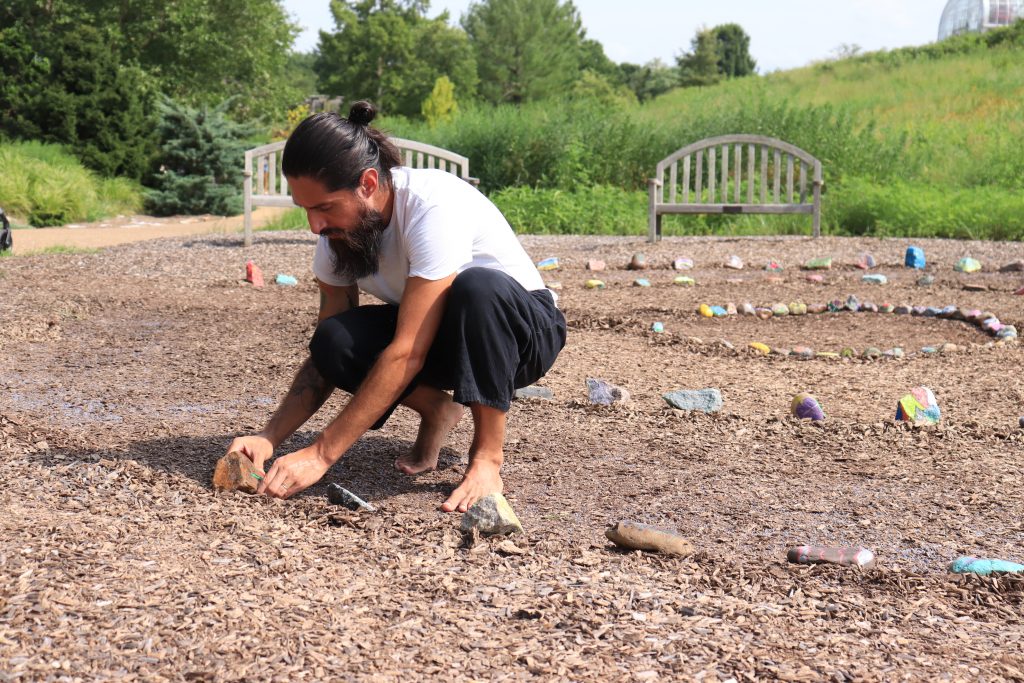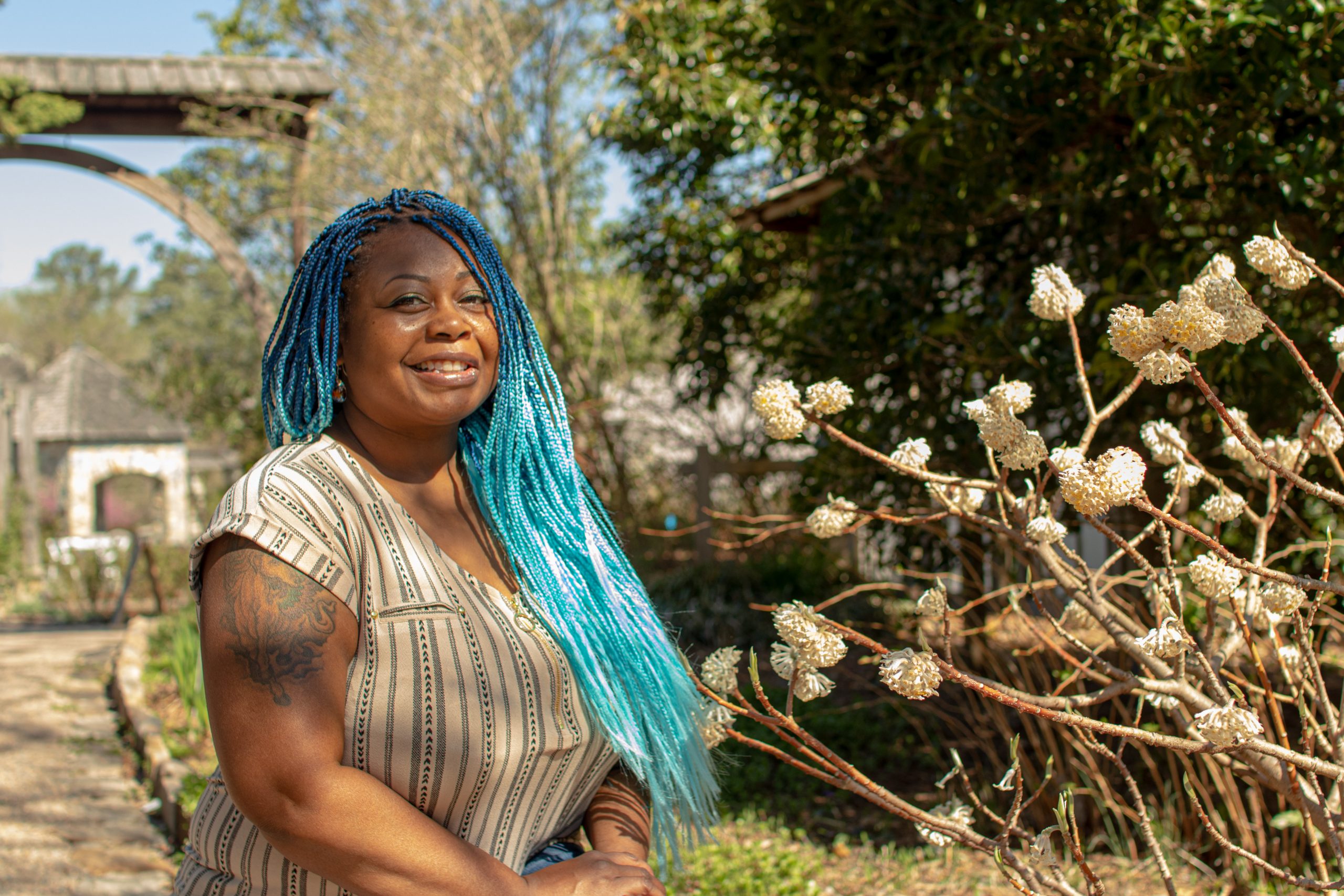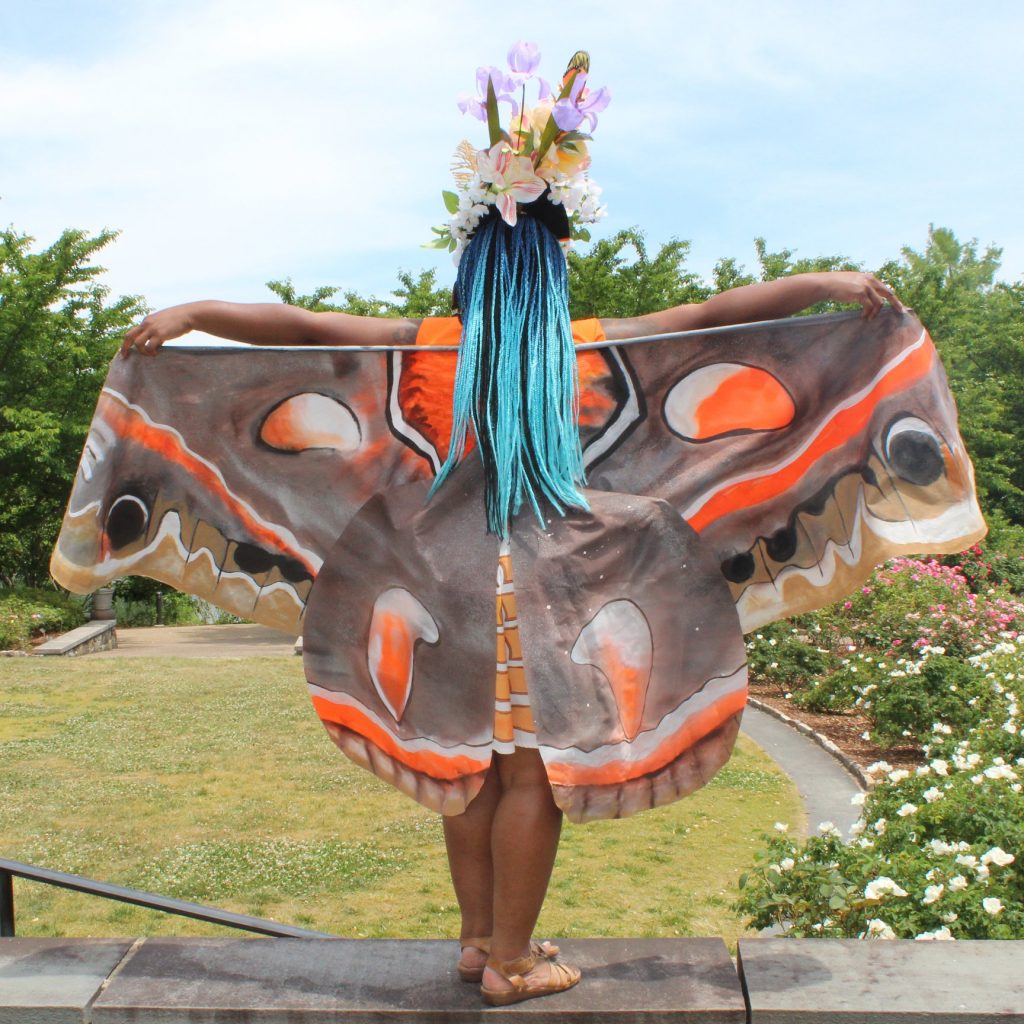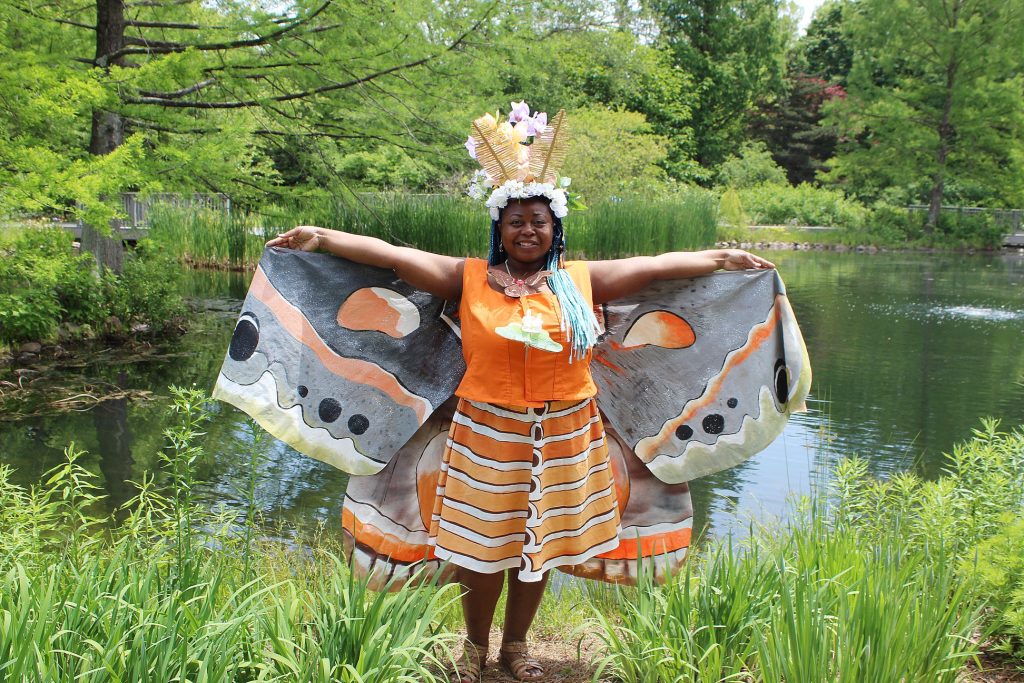Summer Reflections of Resident Artist Unicia Buster & Artist Alfonso Acosta
This past year has left many of us in need of deep healing. When all else seems uncertain, it’s important to remind ourselves of our deep and essential connection to the earth.
From noticing the small tadpoles in the pools of the Asian Valley to smelling the sweet scent of magnolias blooming, to hearing the buzz of bees collecting pollen from nearby flowers, taking moments to notice the beautiful scenery around me has brought me appreciation. The Garden aims to provide this sense of healing during events such as RESTORE: The Healing Power of Nature. One of these programs includes the Garden’s new artist in residence program. The featured work includes that of Unica Buster and Alfonso Pérez Acosta. Communal healing is as important now as ever, and the Garden chose to highlight two artists extremely talented in reflecting this idea.
Resident Artists
In past years, the Garden has always featured many forms of art from many artists, but never before have we had artists in residence. Buster and Acosta connected to nature and art and through their work. They help our visitors understand and appreciate our connection with the earth through interactive, engaging and contemplative works. After exploring the campus and becoming inspired, each artist started to create. Unicia Buster drew her inspiration from daffodils, the Cecropia moth, iris, roses, and more. Visitors could find her walking the Garden as a living work of art.
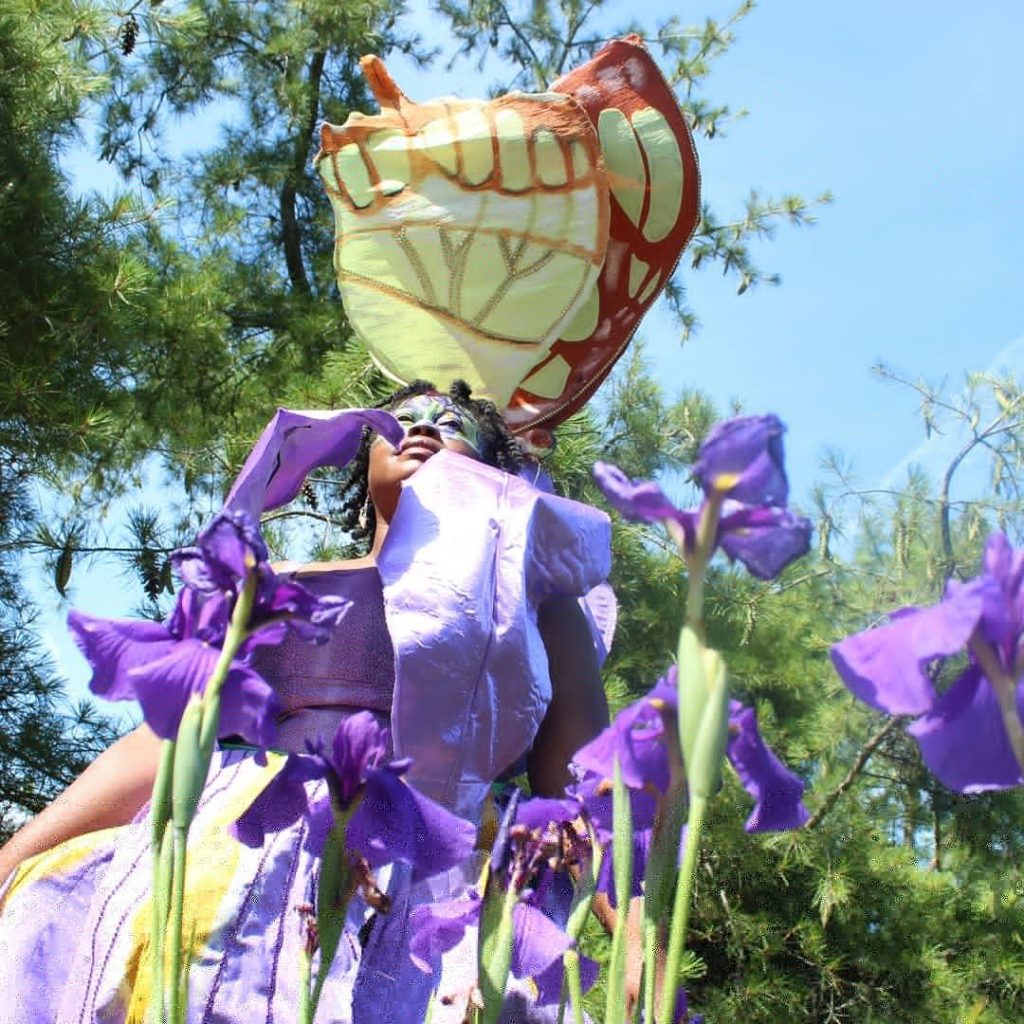
Unicia Buster as a living work of art — here she is dressed as an iris with a malachite butterfly perched on her head. The costume is entirely handmade.
Community Medicine Wheel
While walking through the Garden, I visited resident artist Alfonso Pérez Acosta‘s installation. For weeks, visitors alongside the resident artist painted and wrote on over 300 rocks in four different workshops. The works from these helped to create the large-scale community art piece. Acosta found through his own exploration that rocks serve as a natural element and spiritual anchor to explore our deep internal nature. Ancient rock formations created by Indigenous Peoples of North America called Medicine Wheels deeply inspired this work. Similarly, he aimed to create a sacred space for healing.
As I approached the installation, a volunteer handed me a small cup of lavender blossoms to sprinkle around in the outer circle. She invited me to set an intention as I did. While I walked, Acosta picked up each rock carefully and placed it in a circular formation beginning in the center. Looking at the rocks, each one was completely unique: some with faces, others with words or abstract splotches of paint. The work clearly conveyed a sense of connection despite each of the rocks and each of the rocks’ artists being completely different. Work from people of all different ages, genders, races and cultural backgrounds blended to form one cohesive piece.
“This project is about reconnecting with nature, and I have found that the main way of doing this happens by exploring our deep internal nature. What is it? What does it look like? How does it feel?” Acosta asks in his artist statement. The installation invites every viewer to be present and connected with the inclusive and healing nature of the circles. Alfonso urged onlookers to interact with the piece, adding to the inclusive feeling of the work.
Challenging Sociopolitical Issues
Resident artist Unicia Buster‘s work challenges an array of various important issues. These topics include social ideas of feminine beauty, the narrative around racism and black lives, and human impact on environmental issues. She primarily uses paint, textiles, and photography to create her artwork. Through this exploration of materiality, Buster is concurrently exploring her past experiences, current experiences, and experiences she anticipates.
“As I spent most of my days at home during 2020, I began doing self-exploration through my art. Reconnecting with my spiritual self and discovering the person I want to be has led me back to nature and the possibilities of coexistence with other life,” Buster says. She says she finds that despite all of these different and contrasting experiences, her work brings unity. While walking around, her art and costumes created togetherness with Garden visitors, at least for a moment. She says finding the common ground that lies in the beauty of nature inspires her.
Beauty in Natural Designs
Buster’s works on display in the Lora Robins Library are the actual outfits she designed and wore for her performance art. They showcase nature’s beauty, some of which she feels usually goes unnoticed. In her words, while exploring the Garden “I could continue my self-exploration with nature and connect with people in a way different than what would ordinarily happen.” One costume she made pays homage to the Hyaphora cecropia or Cecropia moth. For another, she found inspiration from Ctenanthe burl marxii (the fishbone prayer plant) and Calathea makoyana (the peacock plant). She found beauty in the natural designs on the leaves of these two plants. Her intricate headpieces and outfits perfectly pair the environment’s beauty with her creativity.
Her work is currently on display at the Lora Robins Library at Lewis Ginter Botanical Garden. The Library is open Monday-Saturday 10 a.m. to 4 p.m. Here you can view beautiful costumes and art, both miniature and full scale. Her bright and elaborate costumes inspired by nature are sure to draw you in.
Visiting the Exhibits
Unicia Buster’s exhibition runs now through September 30, 2021, in the Lora Robins Library. Alfonso Pérez Acosta’s rock installation is on display now until October 31, 2021. I urge you to visit these works soon. You may find some much-needed healing after a year of hardship for many.
